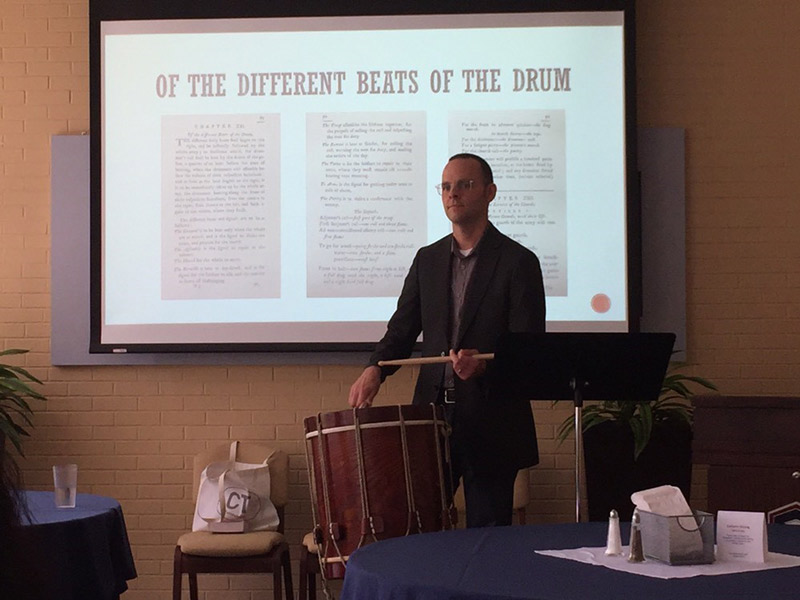- Apply
- Visit
- Request Info
- Give
Jeff Calissi Describes Drumming and the Music of the American Revolution
Written by Dwight Bachman
Published on September 20, 2019
 Most Americans have spent time in class — going back to elementary school — learning about the Revolutionary War. But do you know of the role that the drum played in colonial times? Jeffrey Calissi, associate professor of music, kicked off the fall Faculty Scholars Forum series describing how drums were used to communicate, gather people together, help troops carry out orders to salute and signal the moment to begin marching.
Most Americans have spent time in class — going back to elementary school — learning about the Revolutionary War. But do you know of the role that the drum played in colonial times? Jeffrey Calissi, associate professor of music, kicked off the fall Faculty Scholars Forum series describing how drums were used to communicate, gather people together, help troops carry out orders to salute and signal the moment to begin marching.
Calissi’s entertaining discussion also included a demonstration of the rope drum during colonial times in New England during the Revolutionary War.
Many centuries before anything was recorded, Calissi said the drum conveyed special messages. The snare drum and fife were frequently paired as part of drills and exercises, along with marches and parades, contributing to fellowship, pride and loyalty in the Colonial militia during the Revolutionary War.
Calissi explained the use of drums during the French and Indian War, and up through and including the American Revolution. During battles with the British army, Calissi said the drum functioned as “the radio of the battlefield” because of its ability to project commands and signals. Trained drummers had different beats, and each beat had a message. For instance, two strokes and a flam might say ‘Go for wood or go for food.’
Calissi concluded his presentation with a fascinating demonstration of drum calls and signals, along with a performance on a rope drum that was constructed in the likeness of one from the 1770s, complete with a steam-bent shell and hoops, calfskin heads and gut snares, and tacked with 250-year old hand-forged nails.


